Have you found a weed with red stems in your yard?
Correct recognition of new weeds can help you plan an effective way to get rid of them.
So we’ve made a list of 15 of the most common weeds with red stems, giving you the information and photos to help you make a successful identification.
Let’s dive in.
Pokeweed (Phytolacca Americana)
Pokeweed is a large and problematic perennial broadleaf weed. Pokeweed is an invasive weed because it can spread rapidly in an area, growing in dense, tall bushes that crowd out and displace other plants.
You can easily identify pokeweed when it bears fruit. Pokeweed has attractive, dark-purple berries that are tempting to eat, but make sure you don’t. Pokeweed berries are poisonous.
The fruit contains seeds that help the weed to spread. So even if you don’t remove the plant, it’s worth removing the fruit, especially if you have young children who might put the berries in their mouths.
When pokeweed isn’t producing fruit, you can recognize the weed by its thick hollow red stems, green-white flowers, and large green leaves with long petioles.
Poison Ivy (Toxicodendron radicans)
You can find poison ivy growing as a climbing vine, a shrub, or a groundcover. The vine has reddish stems and leaves that grow alternately, each leaf consisting of 3 leaflets. Young poison ivy plants often have reddish leaves in the spring that turn to green in the summer. You can find poison ivy growing in shady and sunny areas of your yard, with vines that sometimes reach 100 ft.
Be careful when handling poison ivy. It’s a noxious weed that contains an oily resin called urushiol that causes a rash if it gets on your skin.
Virginia Creeper (Parthenocissus quinquefolia)
Virginia creeper is a perennial woody vine weed often found around orchards, vineyards, and gardens.
Virginia creeper is a fast-growing vine that’s sometimes mistaken for poison ivy. But unlike poison ivy, Virginia creeper has five leaflets making up its compound leaves that taper to a pointed tip with saw-toothed edges. And Virginia creeper doesn’t produce urushiol oil, the skin irritant that poison ivy is notorious for. But it does produce sap that causes a skin rash in highly sensitive people.
Virginia creeper grows well in full sun to full shade and can climb up to 30 ft. with adhesive pads at the end of tendrils holding the vine in place. When Virginia creeper blooms, it produces clusters of yellow flowers at the end of green-red stalks. In the fall, Virginia creeper leaves turn red, and the flowers give way to dark blue-black berries at the end of the now bright red stalks. The berries are poisonous, so don’t eat them.
Redroot Pigweed (Amaranthus retroflexus)
Redroot pigweed is a summer annual broadleaf weed common in agricultural land and disturbed areas, such as ditch banks and roadsides. But you can also find redroot pigweed encroaching on gardens and landscaped areas. The weed usually grows up to 4 ft. tall, but with plenty of sunlight and little competition, it can grow much taller.
Redroot pigweed takes its name from its thick, red taproot. But the lower stems of the weed are also red. The upper plant stems are hairy with lance-shaped leaves growing from leaf stalks. Egg-shaped leaves grow from the lower plant stems. The leaves grow alternately along the stem, have prominent veins, and are often reddish underneath.
The weed blooms from early summer through to the first frost, producing clusters of inconspicuous green flowers densely packed along the branches and in spikes at the end of stems.
Common Purslane (Portulaca oleracea)
Purslane is a creeping weed that grows low to the ground. A common lawn weed, you can identify purslane by its fleshy, reddish stem, teardrop-shaped small green leaves, and small yellow flowers. Purslane is a flat weed that grows prostrate in all directions from a central root, forming a mat about 2-3 ft. wide and up to 3-inches tall.
The small flowers turn into seed pods that burst open to disperse tiny black seeds. The seeds remain viable for a long time, and if they spread around your garden, you can find yourself dealing with purslane for years to come. So it’s best to get rid of the weed quickly before it matures.
You can eat purslane leaves, with many people using them as a nutritious addition to a salad.
Giant Ragweed (Ambrosia trifida)
Giant ragweed is a noxious weed species native to North America. Giant ragweed is a tall weed that grows up to 12 feet, outcompeting other plants in the area by preventing them from receiving sunlight as it towers above them. Because of its size, giant ragweed can be very destructive to plant life when it moves into an area.
Giant ragweed has large lobed leaves that can measure 12-inches across. The weed has thick green or reddish stems that are rough and sometimes have a covering of fuzzy white hairs. The upper stem ends in a spike of yellow flowers that hang in clusters.
Giant ragweed spreads through seeds, producing spiky burs that catch on animal fur or clothing, or wash away with water. The weed is well-known for causing allergies, producing fine pollen that affects hayfever sufferers.
Creeping Water Primrose (Ludwigia peploides)
LUDWIGIA PEPLOIDES BY MICHAEL GRAS, M.ED.
Creeping water primrose is a potentially invasive weed that can spread quickly in wetlands. It’s common to find creeping water primrose growing in shallow water and muddy soil along river banks and wet meadows. Creeping water primrose is also known as a pond weed.
WATER PRIMROSE WITH REDDISH STEMS BY PERE IGOR, CC BY-SA 3.0, VIA WIKIMEDIA COMMONS
The weed produces long red stems that are sometimes green. The stems creep over wet soil, shallow water, and mud, forming thick mats that float, sometimes clogging waterways.
Creeping water primrose flowers in summer. Each flower measures about 1-2 inches across and has five bright yellow petals.
Purple Deadnettle (Lamium purpureum)
Purple deadnettle is a winter annual broadleaf weed that you’ll often find in moist areas such as drainage ditches, the edges of woodland, or shady lawn areas with poor drainage. Purple deadnettle is an aggressive grower, and in the right conditions, the weed quickly spreads.
Purple deadnettle has a distinctive square, reddish-green stems. At the top of the stems are small pink-purple flowers. The weed leaves are heart-shaped or triangular with gently scalloped edges, and sparsely covered with fine hairs.
Purple deadnettle is usually a low-growing plant, although sometimes it grows up to 10-inches tall.
Creeping Wood Sorrel (Oxalis corniculata)
Creeping wood sorrel is a low-growing plant that resembles a clover weed. This is because wood sorrel has a similar trifoliate leaf, consisting of 3 heart-shaped leaflets. The weed has light-green to purple-red stems and grows from 2-8-inches tall, spreading through horizontal stolons that creep above and below the ground.
When creeping sorrel blooms, it produces flowers from stem tips and leaf axils, either individually or in small groups of 2-5. Each flower has five yellow petals that are sometimes reddish at the base.
Creeping wood sorrel is a weedy wildflower that spreads aggressively in the right conditions, preferring full or partial sun and disturbed areas of loose, fertile soil.
Henbit (Lamium amplexicaule)
Henbit bears a resemblance to its close cousin purple deadnettle. Like purple deadnettle, henbit has a square stem and pink-purple flowers. But henbit flowers have a longer tube than those found on purple deadnettle.
Henbit leaves are egg-shaped, grow in opposite pairs, and have deeply scalloped edges attached to a deep red stem. Depressed veins on the upper leaf surface make the leaves look wrinkled. The upper leaves are green and attached directly to the main stem, with the lower leaves attached to petioles. In contrast, purple deadnettle has purple-tinged upper leaves connected to petioles.
Like purple deadnettle, henbit likes to grow in moist, fertile soil, and full to partial shade. Henbit is a winter annual broadleaf weed that blooms in the spring before disappearing in May as temperatures climb.
Spiny Amaranth (Amaranthus spinosus)
Spiny amaranth is a summer annual broadleaf weed that bears a close resemblance to other types of pigweed, such as redroot pigweed. The big difference is that spiny pigweed has thorns on its red stems.
The leaves on spiny pigweed grow alternately along the stem from long petioles and are ovate. The leaves are hairless and grow between 1 ¼ to 2 ½ inches long. At the base of the leaf petioles, you’ll find a pair of needle-like spines measuring from 5mm to 10mm long. Be careful when touching this plant and wear a good pair of gardening gloves.
It flowers from May to October with tiny yellow-green flowers.
You’ll usually find spiny pigweed growing in hayfields and pastures, but its spines and toxic foliage make it unpalatable for grazing animals.
Poison Sumac (Toxicodendron vernix)
Poison sumac is a perennial broadleaf shrub or small tree that most people consider a weed tree, as nobody wants this plant growing on their property.
The big problem with poison sumac is given away by the name: every part of the plant is toxic. Similar to poison ivy, poison sumac produces urushiol, an oil that causes an allergic response when it comes into contact with your skin. Urushiol is released by the plant whenever it’s crushed or bruised.
You can identify poison sumac by its red stems. Each stem has 7-13 smooth-edged leaves with sharp points growing in opposite pairs. When it blooms in June, the plant produces clusters of small yellow-green flowers, and eventually develops large clusters of green berries that hang from the stems and turn white in the fall.
Castor Bean (Ricinus Communis)
Also known as the castor oil plant, Ricinus communis is a fast-growing perennial shrub, growing up to 10 ft. a year up to 40 ft. tall. The weed produces large glossy green leaves growing alternately from long red stems that branch from a thick central red stalk. Long petioles connect the leaves to the stem.
The plant produces dense clusters of red flowers at the top of the stems and seed capsules about the size of a golf ball that can be pink, red, or green. Soft spines cover the seed capsules, and each contains three seeds that eject when the seedpod splits open.
Japanese Knotweed (Fallopia japonica)
Japanese knotweed is a noxious weed that causes serious problems if it grows on your property. Japanese knotweed is very hard to eradicate, and the plant spreads quickly through seeds and rhizomes.
This weed has thick, hollow, red stems that resemble bamboo. They grow in thick stands up to 15 ft. tall, crowding out and displacing native plants over a large area.
Shovel-shaped dark green leaves with pointed tips grow out from nodes on the stems. Flowering from August to September, Japanese knotweed produces branched clusters of small creamy-white flowers.
Geranium (Geranium Spp.)
SHINY GERANIUM
Two well-known types of geraniums with red stems are shiny geranium (Geranium lucidum) and herb Robert (Geranium robertianum).
Shiny geranium is a low-growing annual broadleaf weed that produces small pink flowers from spring to late July. The flowers have five petals and grow in pairs on short stems. Kidney-shaped leaves with 5-7 lobes grow from hairless red and green stems that can reach 20-inches tall.
Shiny geranium is a noxious weed in some states as it’s difficult to control, spreading rapidly in open areas and quickly taking over by smothering perennial seedlings and other early spring wildflowers. You’ll often find this weed growing in the grass in woodlands and forest openings.
HERB ROBERT
Herb Robert is a winter and spring annual or biennial. Its appearance is similar to shiny geranium. Herb Robert is a low-growing weed with five-petalled pink flowers and reddish stems. The main differences from shiny geranium that will help you distinguish herb Robert are that hairs cover the whole plant, and the light green leaves are deeply dissected and turn red in late fall.
Red Sorrel (Rumex acetosella)
Also known as common sheep sorrel, red sorrel is a leafy perennial weed that sometimes takes over nutrient deficient, acidic soils where other plants struggle to thrive. Red sorrel is an aggressive weed that spreads through creeping rhizomes and can be hard to control.
Red sorrel has a basal rosette of green spade-shaped leaves that are edible and have a sour flavor. And the weed has an upright red stem with clusters of red flowers growing from red stalks. This red flowering weed blooms between March and November.
You can eat red sorrel plant leaves, which have a sour flavor. But they contain a high level of oxalic acid which can damage the kidneys if consumed in excess.
Read More:
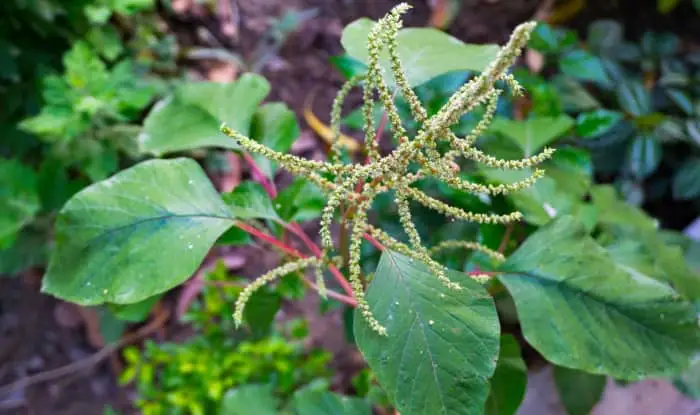
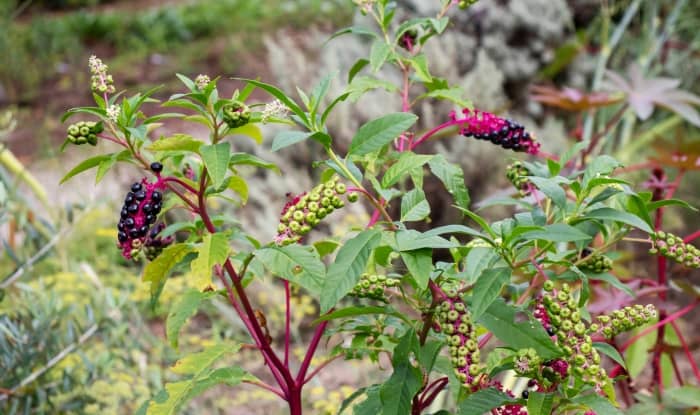


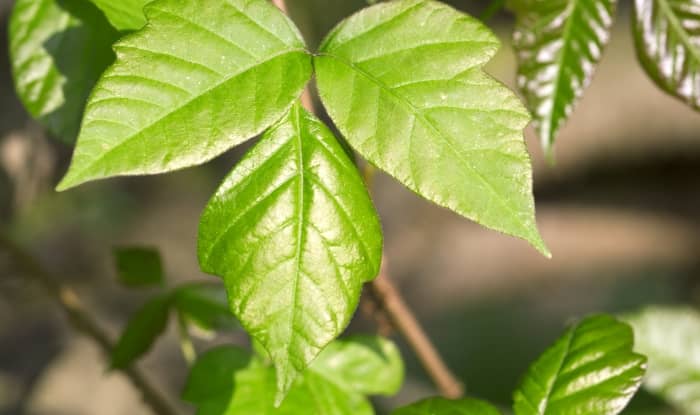

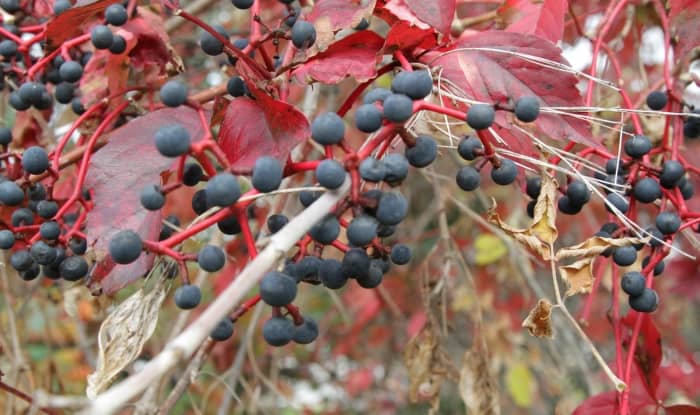
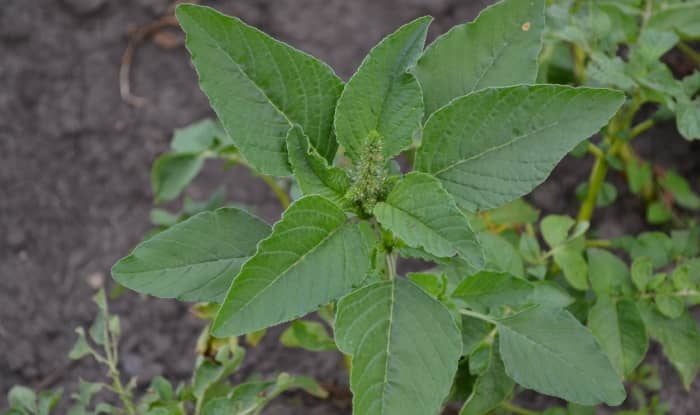
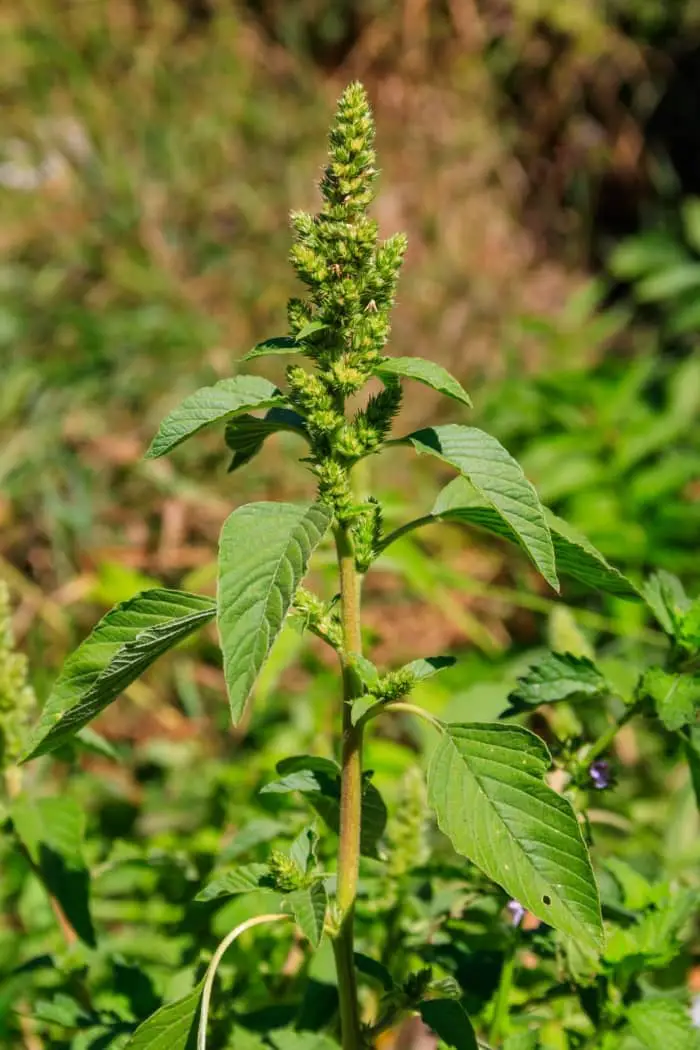
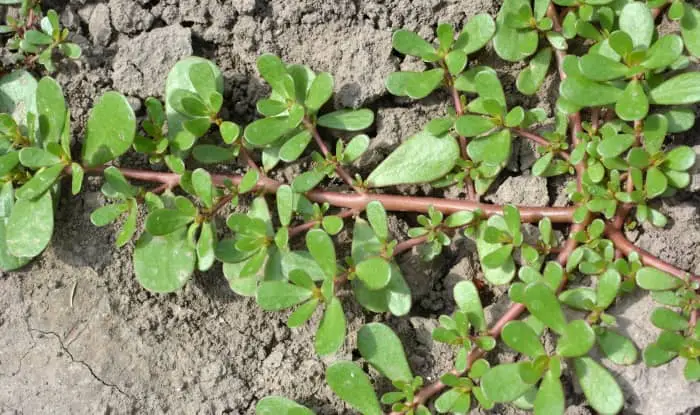
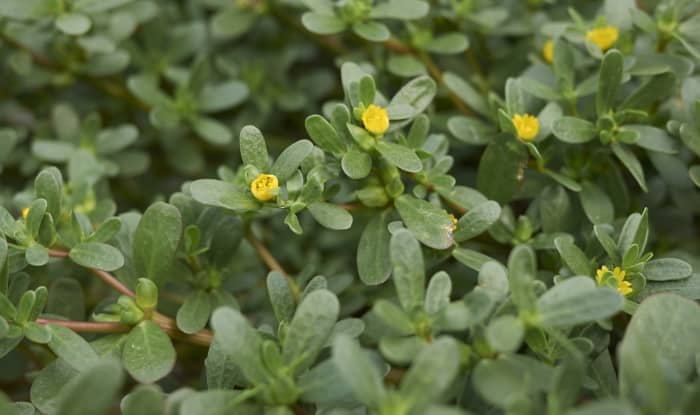
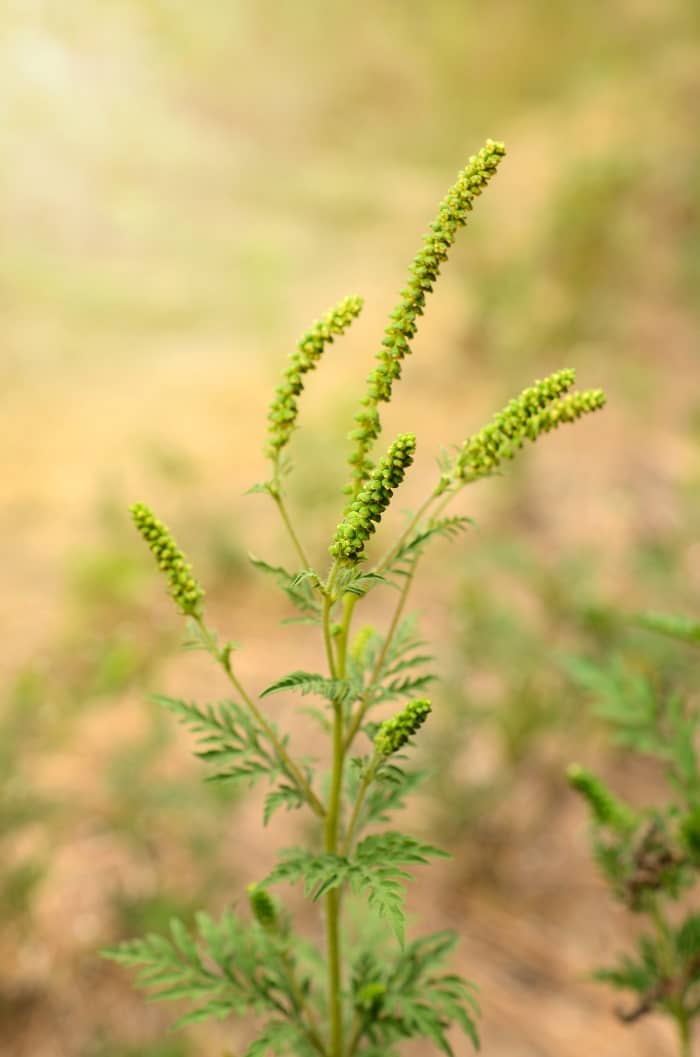

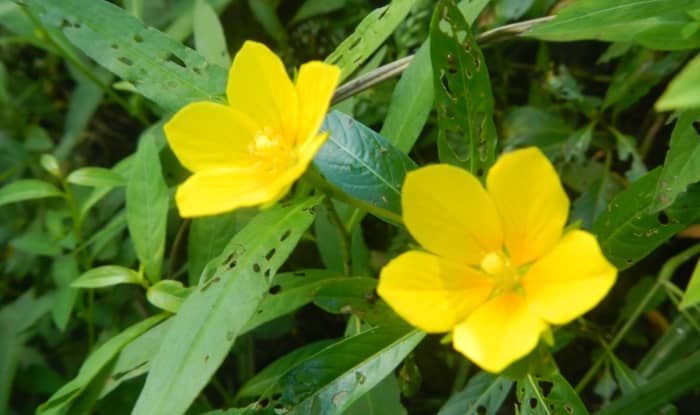
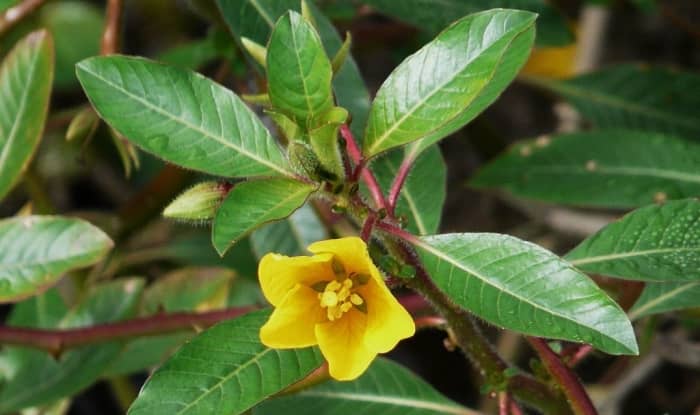
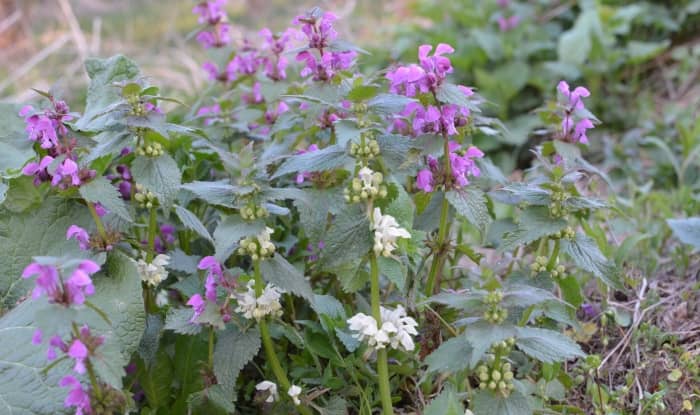

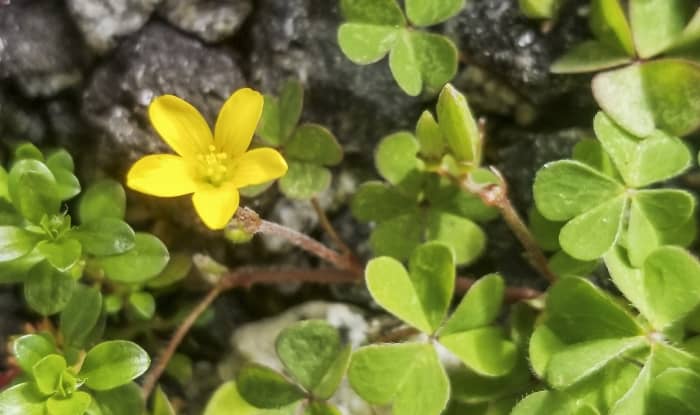

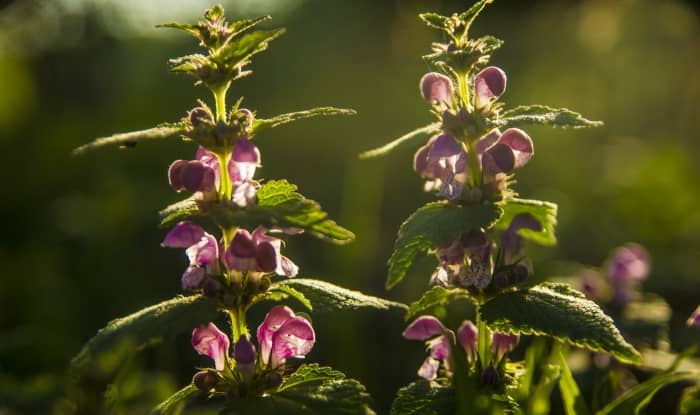
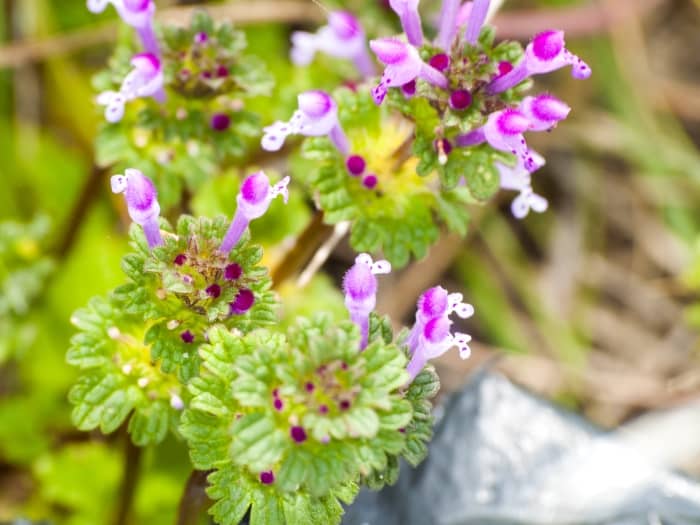

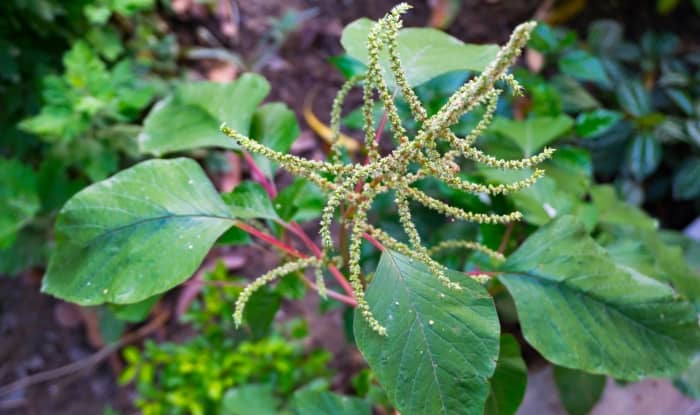
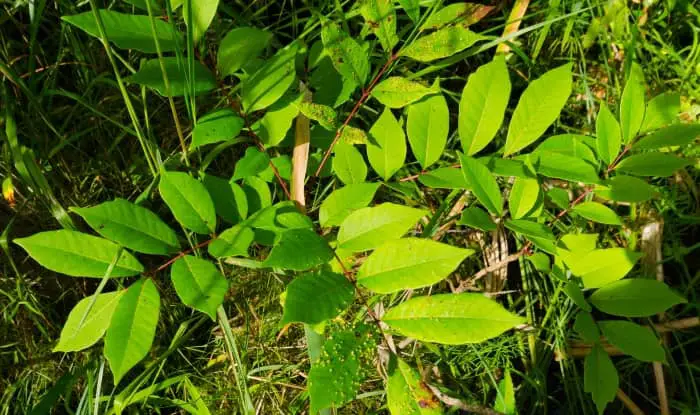
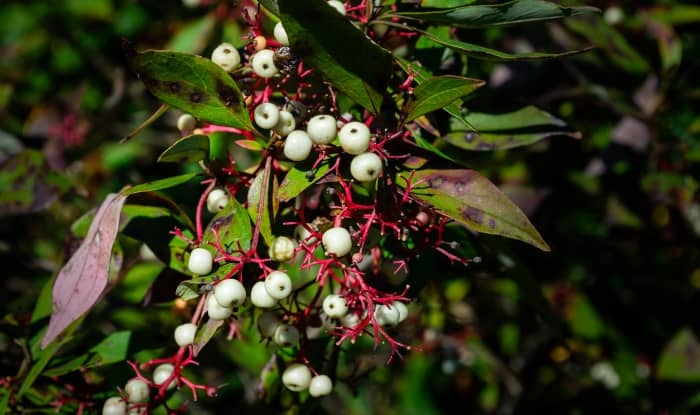
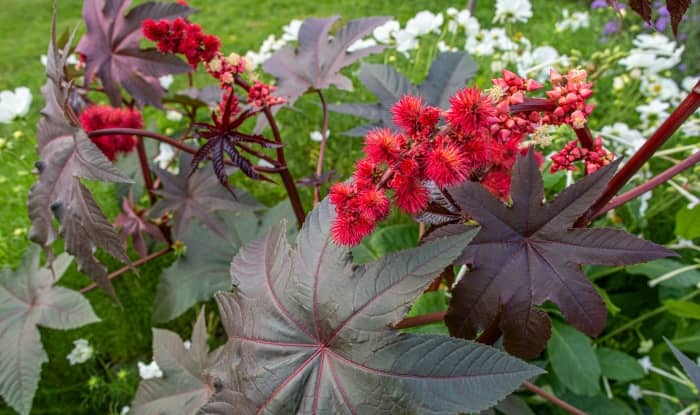

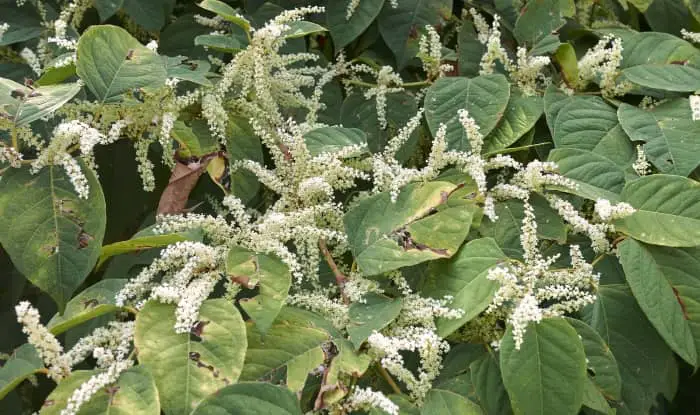
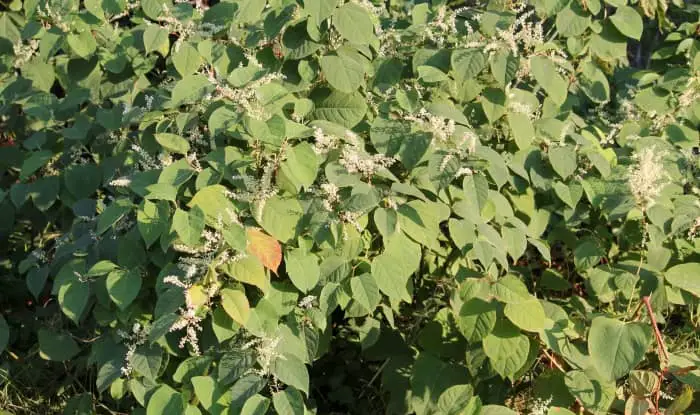
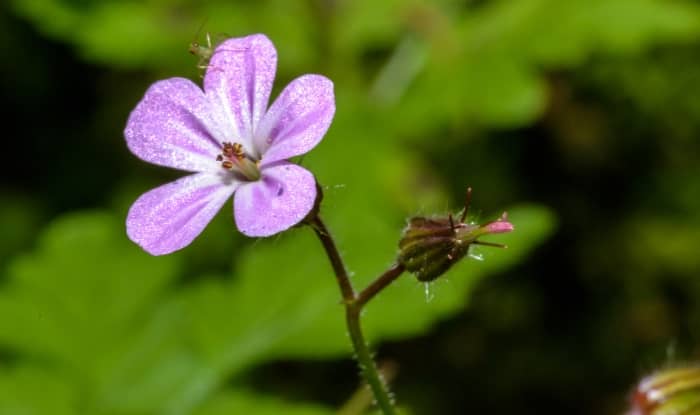
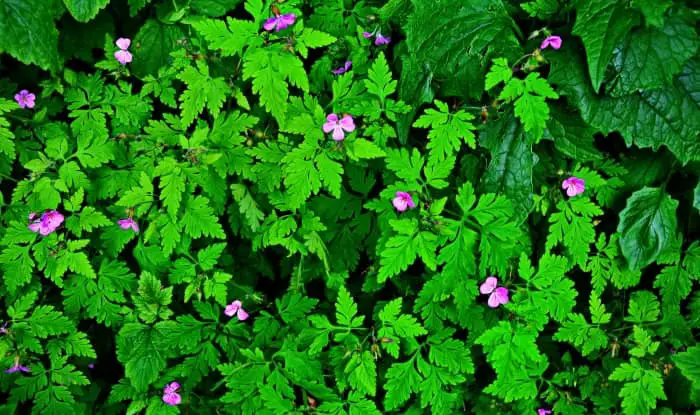
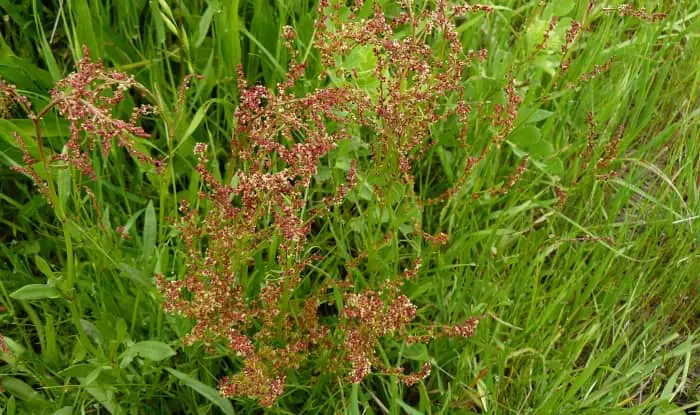
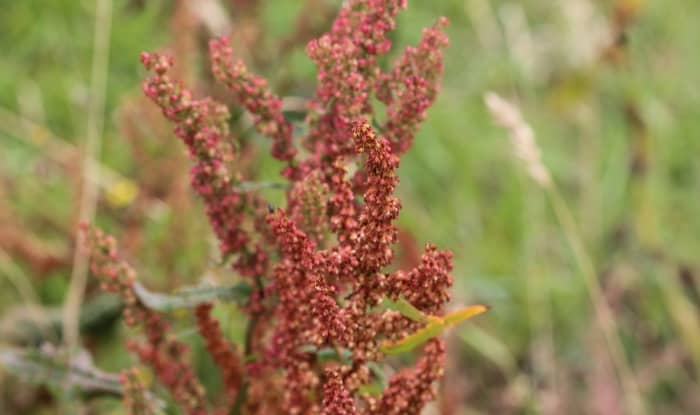
This plant grows in a clump of dark green leafs. Only hard stems about 12 inches tall come up from the leaves On the top of them has a pointed red cone with yellow coming down below the red part. Birds love them. The plant comes back every year.